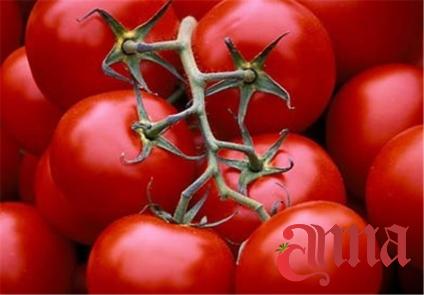The Earth’s crust is a treasure trove of minerals that play a vital role in shaping our planet’s geology and supporting life as we know it. From the sparkling beauty of quartz to the sturdy structure of feldspar, these common crust minerals are the building blocks of our world. In this detailed guide, we will delve deep into the fascinating world of earth’s common crust minerals, exploring their properties, uses, and geological significance. 1. Quartz: The Jewel of the Earth’s Crust Quartz is one of the most abundant minerals in the Earth’s crust, renowned for its mesmerizing beauty and versatile applications. Composed of silicon and oxygen atoms arranged in a crystalline structure, quartz exhibits a wide range of colors and forms, from clear rock crystal to vibrant amethyst. Its hardness and durability make it a popular choice for jewelry, watches, and electronic devices. In nature, quartz can be found in igneous, metamorphic, and sedimentary rocks, reflecting its widespread distribution across the Earth’s crust. 2. Feldspar: The Framework of Earth’s Rocks Feldspar is a group of minerals that form the backbone of many rocks in the Earth’s crust. Comprising aluminum, silicon, and oxygen atoms, feldspar comes in various types, including plagioclase and potassium feldspar. Its abundance and resistance to weathering make it a key component in granite, an igneous rock that forms continents and mountain ranges. Feldspar’s presence in sedimentary and metamorphic rocks underscores its importance in the geological processes that shape the Earth’s surface. 3. Mica: The Sheets of Silicate Brilliance Mica is a unique mineral known for its excellent cleavage and thin, sheet-like structure. Composed of silicon, oxygen, and aluminum atoms, mica exhibits remarkable flexibility and electrical insulation properties. It is commonly found in igneous and metamorphic rocks, where it forms distinct layers that lend themselves to diverse applications. Mica’s use in cosmetics, electrical insulation, and lubricants highlights its commercial significance and industrial versatility. 4. Calcite: The Crystal Clear Calcium Carbonate Calcite is a mineral composed of calcium, carbon, and oxygen atoms, forming exquisite crystals with distinctive rhombohedral shapes. Its transparency and optical properties make it a prized specimen for collectors and a fundamental component in limestone and marble.

.
 Calcite’s abundance in sedimentary rocks and hydrothermal deposits underscores its role in geological processes, such as the formation of caves, stalactites, and hot springs. Its versatile applications in construction, agriculture, and pharmaceuticals highlight calcite’s economic importance and cultural significance. 5. Olivine: The Green Peridot of the Mantle Olivine is a mineral group that includes the gemstone peridot and is a common constituent of the Earth’s mantle. Comprising magnesium, iron, silicon, and oxygen atoms, olivine exhibits a green hue and glassy luster that distinguishes it from other minerals. Its presence in igneous rocks like basalt and mantle peridotite reveals olivine’s deep-seated origins and role in mantle dynamics. Olivine’s use in jewelry, refractory materials, and soil amendments underscores its practical applications and scientific relevance in studying the Earth’s interior. 6. Garnet: The Multifaceted Gem of Diversity Garnet is a diverse mineral group with a wide range of colors, including red, green, and purple, depending on its chemical composition. Comprising aluminum, silicon, and oxygen atoms, garnet occurs in metamorphic and igneous rocks, forming crystals with distinct shapes and properties. Its hardness and durability make garnet a popular gemstone for jewelry, while its abrasive and refractory qualities find applications in industrial processes and waterjet cutting. Garnet’s presence in diverse geological settings highlights its global distribution and geological significance across the Earth’s crust. 7. Pyrite: The Fool’s Gold with a Golden Glint Pyrite, also known as fool’s gold, is a sulfide mineral that bears a striking resemblance to gold with its metallic luster and brassy hue. Composed of iron and sulfur atoms, pyrite occurs in sedimentary and metamorphic rocks, forming cubic crystals and concretions that mimic precious metal deposits. Despite its nickname, pyrite has important industrial applications in sulfur production, steelmaking, and mineral specimens. Pyrite’s role in ore deposits and hydrothermal systems underscores its geological importance and economic value in mining operations. Conclusion: The Earth’s crust is a remarkable repository of common minerals that shape our planet’s landscape, support diverse ecosystems, and fuel human civilization. From the sparkling beauty of quartz to the sturdy structure of feldspar, these minerals play a crucial role in geological processes, industrial applications, and scientific research. By exploring the properties, uses, and geological significance of earth’s common crust minerals, we gain a deeper appreciation for the dynamic forces that have shaped our world and continue to inspire discovery and innovation in geology and beyond.
Calcite’s abundance in sedimentary rocks and hydrothermal deposits underscores its role in geological processes, such as the formation of caves, stalactites, and hot springs. Its versatile applications in construction, agriculture, and pharmaceuticals highlight calcite’s economic importance and cultural significance. 5. Olivine: The Green Peridot of the Mantle Olivine is a mineral group that includes the gemstone peridot and is a common constituent of the Earth’s mantle. Comprising magnesium, iron, silicon, and oxygen atoms, olivine exhibits a green hue and glassy luster that distinguishes it from other minerals. Its presence in igneous rocks like basalt and mantle peridotite reveals olivine’s deep-seated origins and role in mantle dynamics. Olivine’s use in jewelry, refractory materials, and soil amendments underscores its practical applications and scientific relevance in studying the Earth’s interior. 6. Garnet: The Multifaceted Gem of Diversity Garnet is a diverse mineral group with a wide range of colors, including red, green, and purple, depending on its chemical composition. Comprising aluminum, silicon, and oxygen atoms, garnet occurs in metamorphic and igneous rocks, forming crystals with distinct shapes and properties. Its hardness and durability make garnet a popular gemstone for jewelry, while its abrasive and refractory qualities find applications in industrial processes and waterjet cutting. Garnet’s presence in diverse geological settings highlights its global distribution and geological significance across the Earth’s crust. 7. Pyrite: The Fool’s Gold with a Golden Glint Pyrite, also known as fool’s gold, is a sulfide mineral that bears a striking resemblance to gold with its metallic luster and brassy hue. Composed of iron and sulfur atoms, pyrite occurs in sedimentary and metamorphic rocks, forming cubic crystals and concretions that mimic precious metal deposits. Despite its nickname, pyrite has important industrial applications in sulfur production, steelmaking, and mineral specimens. Pyrite’s role in ore deposits and hydrothermal systems underscores its geological importance and economic value in mining operations. Conclusion: The Earth’s crust is a remarkable repository of common minerals that shape our planet’s landscape, support diverse ecosystems, and fuel human civilization. From the sparkling beauty of quartz to the sturdy structure of feldspar, these minerals play a crucial role in geological processes, industrial applications, and scientific research. By exploring the properties, uses, and geological significance of earth’s common crust minerals, we gain a deeper appreciation for the dynamic forces that have shaped our world and continue to inspire discovery and innovation in geology and beyond.
..
 8. Magnetite: The Lodestone of Earth’s Magnetic Field Magnetite is a magnetic mineral composed of iron and oxygen atoms, known for its strong attraction to magnets and its role in Earth’s magnetic field. It occurs in igneous and metamorphic rocks, forming octahedral crystals and massive deposits that exhibit magnetic properties. Magnetite is used in compasses, magnetic recording media, and as a heavy mineral in geological exploration. Its presence in igneous rocks like basalt and in sedimentary deposits highlights its importance in understanding the Earth’s magnetic field and geological history. 9. Halite: The Salty Treasure Beneath the Earth’s Crust Halite, commonly known as rock salt, is a mineral composed of sodium and chlorine atoms that forms in evaporite deposits and sedimentary rocks. Its distinctive cubic crystals and salty taste make it a valuable resource for salt production, seasoning, and chemical industries. Halite deposits are found worldwide, often associated with ancient seas and brine formations, reflecting the geological processes of evaporation and salt deposition. Halite’s economic importance in salt mining and food preservation underscores its cultural significance and industrial applications in modern society. 10. Gypsum: The Versatile Mineral with a Satiny Sheen Gypsum is a soft sulfate mineral composed of calcium, sulfur, and oxygen atoms, known for its distinctive cleavage and satin-like luster. It occurs in sedimentary rocks, evaporite deposits, and hydrothermal veins, forming crystals and massive beds that are used in construction, agriculture, and medical applications. Gypsum is commonly found in drywall, plaster, and fertilizer, reflecting its practical uses and economic value in various industries. Its association with evaporite formations and sedimentary rocks highlights gypsum’s role in geological processes and environmental geology. 11. Biotite: The Shimmering Mica with Dark Brilliance Biotite is a dark-colored mica mineral composed of iron, magnesium, aluminum, and silicon atoms, known for its perfect cleavage and metallic sheen. It occurs in igneous and metamorphic rocks, forming dark sheets and flakes that add luster to rocks and minerals. Biotite’s presence in granite, schist, and gneiss underscores its role in petrology and mineralogy, providing insights into rock formation and metamorphic processes. Its use in thin-section microscopy and geochronology highlights biotite’s scientific importance in studying the Earth’s crust and geological history.
8. Magnetite: The Lodestone of Earth’s Magnetic Field Magnetite is a magnetic mineral composed of iron and oxygen atoms, known for its strong attraction to magnets and its role in Earth’s magnetic field. It occurs in igneous and metamorphic rocks, forming octahedral crystals and massive deposits that exhibit magnetic properties. Magnetite is used in compasses, magnetic recording media, and as a heavy mineral in geological exploration. Its presence in igneous rocks like basalt and in sedimentary deposits highlights its importance in understanding the Earth’s magnetic field and geological history. 9. Halite: The Salty Treasure Beneath the Earth’s Crust Halite, commonly known as rock salt, is a mineral composed of sodium and chlorine atoms that forms in evaporite deposits and sedimentary rocks. Its distinctive cubic crystals and salty taste make it a valuable resource for salt production, seasoning, and chemical industries. Halite deposits are found worldwide, often associated with ancient seas and brine formations, reflecting the geological processes of evaporation and salt deposition. Halite’s economic importance in salt mining and food preservation underscores its cultural significance and industrial applications in modern society. 10. Gypsum: The Versatile Mineral with a Satiny Sheen Gypsum is a soft sulfate mineral composed of calcium, sulfur, and oxygen atoms, known for its distinctive cleavage and satin-like luster. It occurs in sedimentary rocks, evaporite deposits, and hydrothermal veins, forming crystals and massive beds that are used in construction, agriculture, and medical applications. Gypsum is commonly found in drywall, plaster, and fertilizer, reflecting its practical uses and economic value in various industries. Its association with evaporite formations and sedimentary rocks highlights gypsum’s role in geological processes and environmental geology. 11. Biotite: The Shimmering Mica with Dark Brilliance Biotite is a dark-colored mica mineral composed of iron, magnesium, aluminum, and silicon atoms, known for its perfect cleavage and metallic sheen. It occurs in igneous and metamorphic rocks, forming dark sheets and flakes that add luster to rocks and minerals. Biotite’s presence in granite, schist, and gneiss underscores its role in petrology and mineralogy, providing insights into rock formation and metamorphic processes. Its use in thin-section microscopy and geochronology highlights biotite’s scientific importance in studying the Earth’s crust and geological history.
…
 12. Hematite: The Red Iron Ore of Geological Riches Hematite is an iron oxide mineral known for its reddish-brown color and metallic luster, forming botryoidal, reniform, and specular varieties. It occurs in sedimentary, igneous, and metamorphic rocks, as well as in hydrothermal veins and soil deposits. Hematite is a key ore mineral for iron production, steelmaking, and pigments, reflecting its economic significance and industrial applications. Its association with banded iron formations and iron-rich deposits highlights hematite’s role in geological processes, ore genesis, and mineral exploration. 13. Amphibole: The Diverse Group of Fibrous Minerals Amphibole is a mineral group that includes various silicate minerals like hornblende, actinolite, and tremolite, known for their fibrous, prismatic, and columnar crystals. Comprising magnesium, iron, calcium, and silica atoms, amphiboles occur in igneous, metamorphic, and hydrothermal rocks, as well as in asbestos deposits. Amphibole minerals have diverse industrial applications in construction materials, heat-resistant products, and asbestos remediation. Their presence in volcanic rocks, schists, and mineral veins highlights amphibole’s geological significance and mineralogical diversity in the Earth’s crust. 14. Kaolinite: The Clays of Earth’s Weathering and Formation Kaolinite is a clay mineral composed of aluminum, silicon, and oxygen atoms, known for its white color, soft texture, and absorbent properties. It forms in weathered granite, feldspar, and volcanic rocks, as well as in sedimentary deposits and soils. Kaolinite is used in ceramics, papermaking, cosmetics, and pharmaceuticals, reflecting its versatile applications and commercial value. Its association with weathering processes, soil formation, and clay mineralogy highlights kaolinite’s role in environmental geology and geotechnical engineering. Conclusion: Earth’s common crust minerals represent a diverse array of elements, compounds, and structures that contribute to the dynamic processes shaping our planet’s geology, ecosystems, and human activities. From the sparkling beauty of quartz to the magnetic allure of magnetite, these minerals play essential roles in geological processes, industrial applications, and scientific research. By exploring the properties, uses, and geological significance of earth’s common crust minerals, we deepen our understanding of the intricate relationships between rocks, minerals, and the Earth’s dynamic crust. As we continue to unearth the wonders of the Earth’s common crust minerals, we discover a world of beauty, complexity, and geological wonders waiting to be explored and appreciated.
12. Hematite: The Red Iron Ore of Geological Riches Hematite is an iron oxide mineral known for its reddish-brown color and metallic luster, forming botryoidal, reniform, and specular varieties. It occurs in sedimentary, igneous, and metamorphic rocks, as well as in hydrothermal veins and soil deposits. Hematite is a key ore mineral for iron production, steelmaking, and pigments, reflecting its economic significance and industrial applications. Its association with banded iron formations and iron-rich deposits highlights hematite’s role in geological processes, ore genesis, and mineral exploration. 13. Amphibole: The Diverse Group of Fibrous Minerals Amphibole is a mineral group that includes various silicate minerals like hornblende, actinolite, and tremolite, known for their fibrous, prismatic, and columnar crystals. Comprising magnesium, iron, calcium, and silica atoms, amphiboles occur in igneous, metamorphic, and hydrothermal rocks, as well as in asbestos deposits. Amphibole minerals have diverse industrial applications in construction materials, heat-resistant products, and asbestos remediation. Their presence in volcanic rocks, schists, and mineral veins highlights amphibole’s geological significance and mineralogical diversity in the Earth’s crust. 14. Kaolinite: The Clays of Earth’s Weathering and Formation Kaolinite is a clay mineral composed of aluminum, silicon, and oxygen atoms, known for its white color, soft texture, and absorbent properties. It forms in weathered granite, feldspar, and volcanic rocks, as well as in sedimentary deposits and soils. Kaolinite is used in ceramics, papermaking, cosmetics, and pharmaceuticals, reflecting its versatile applications and commercial value. Its association with weathering processes, soil formation, and clay mineralogy highlights kaolinite’s role in environmental geology and geotechnical engineering. Conclusion: Earth’s common crust minerals represent a diverse array of elements, compounds, and structures that contribute to the dynamic processes shaping our planet’s geology, ecosystems, and human activities. From the sparkling beauty of quartz to the magnetic allure of magnetite, these minerals play essential roles in geological processes, industrial applications, and scientific research. By exploring the properties, uses, and geological significance of earth’s common crust minerals, we deepen our understanding of the intricate relationships between rocks, minerals, and the Earth’s dynamic crust. As we continue to unearth the wonders of the Earth’s common crust minerals, we discover a world of beauty, complexity, and geological wonders waiting to be explored and appreciated.











Your comment submitted.